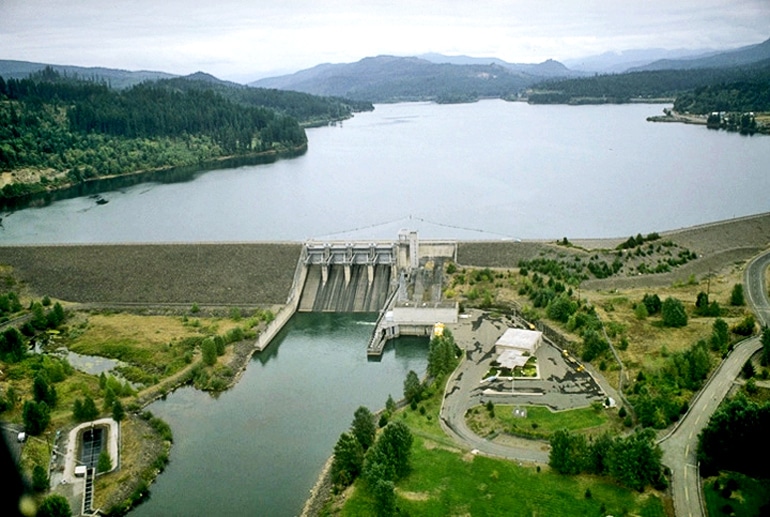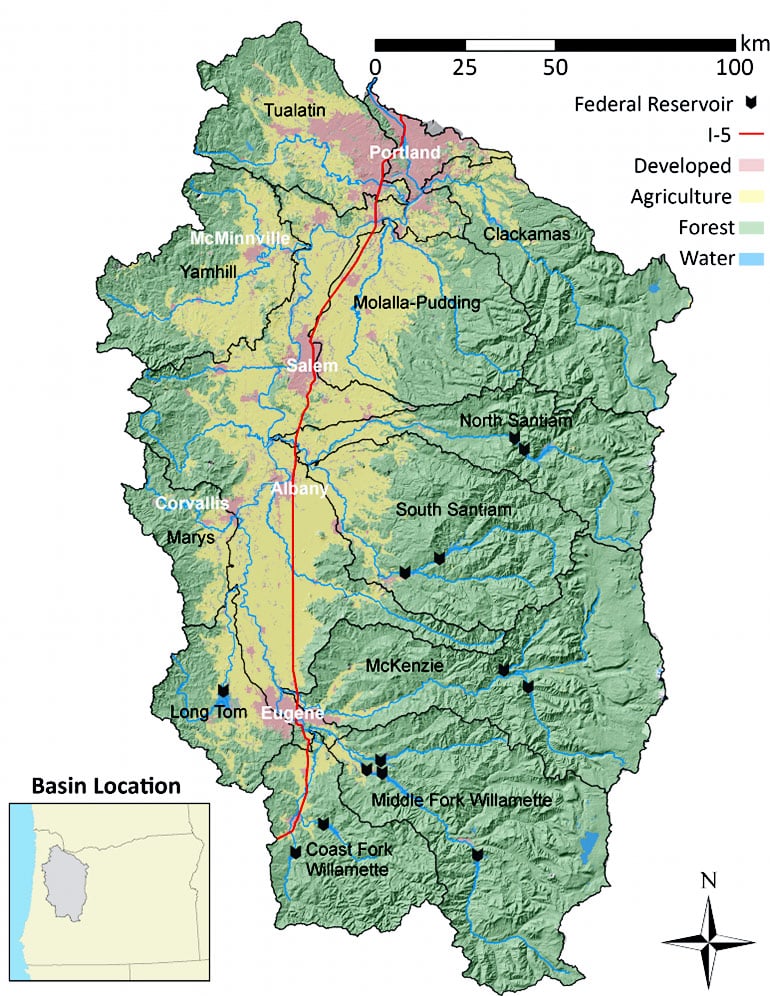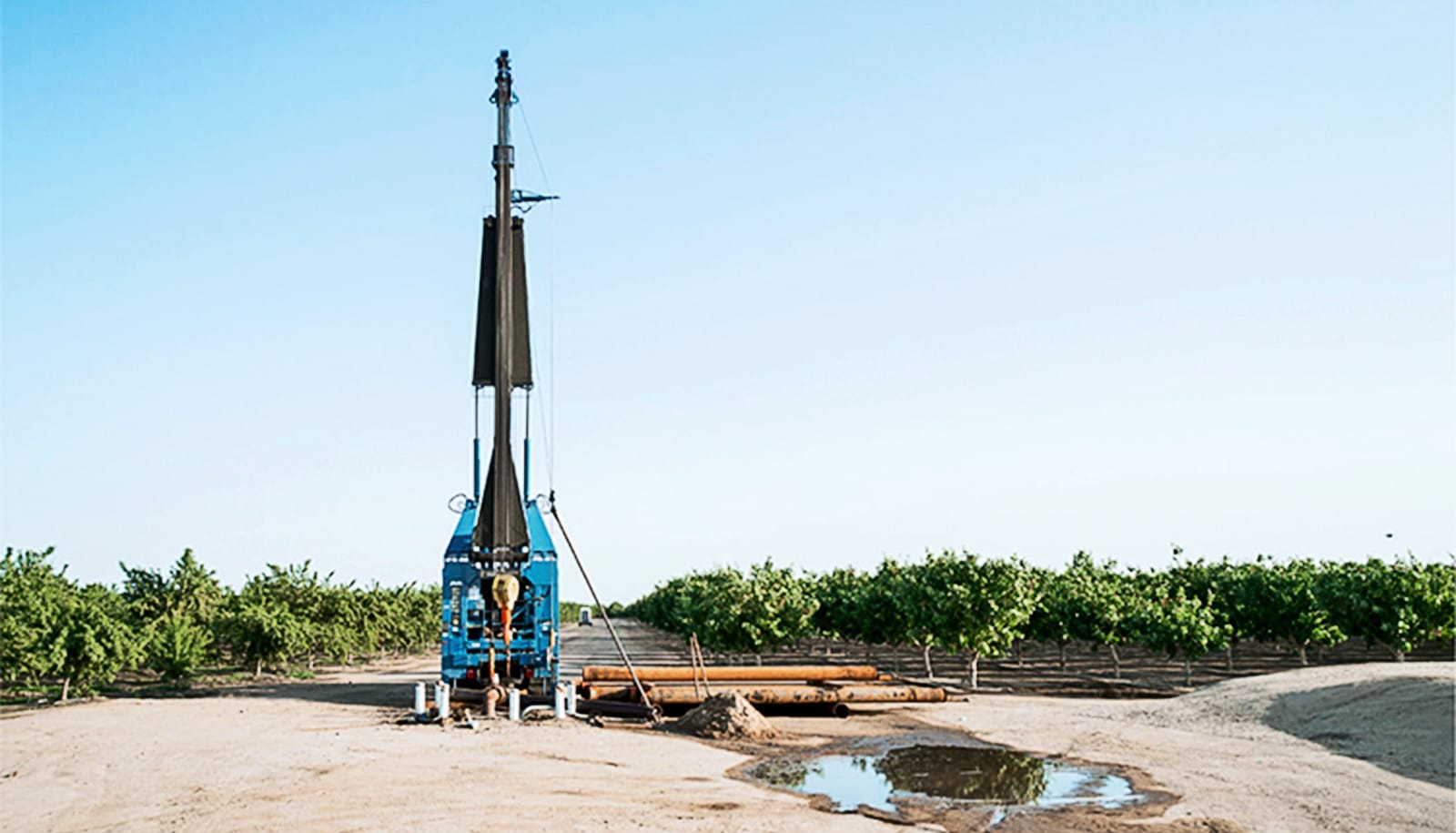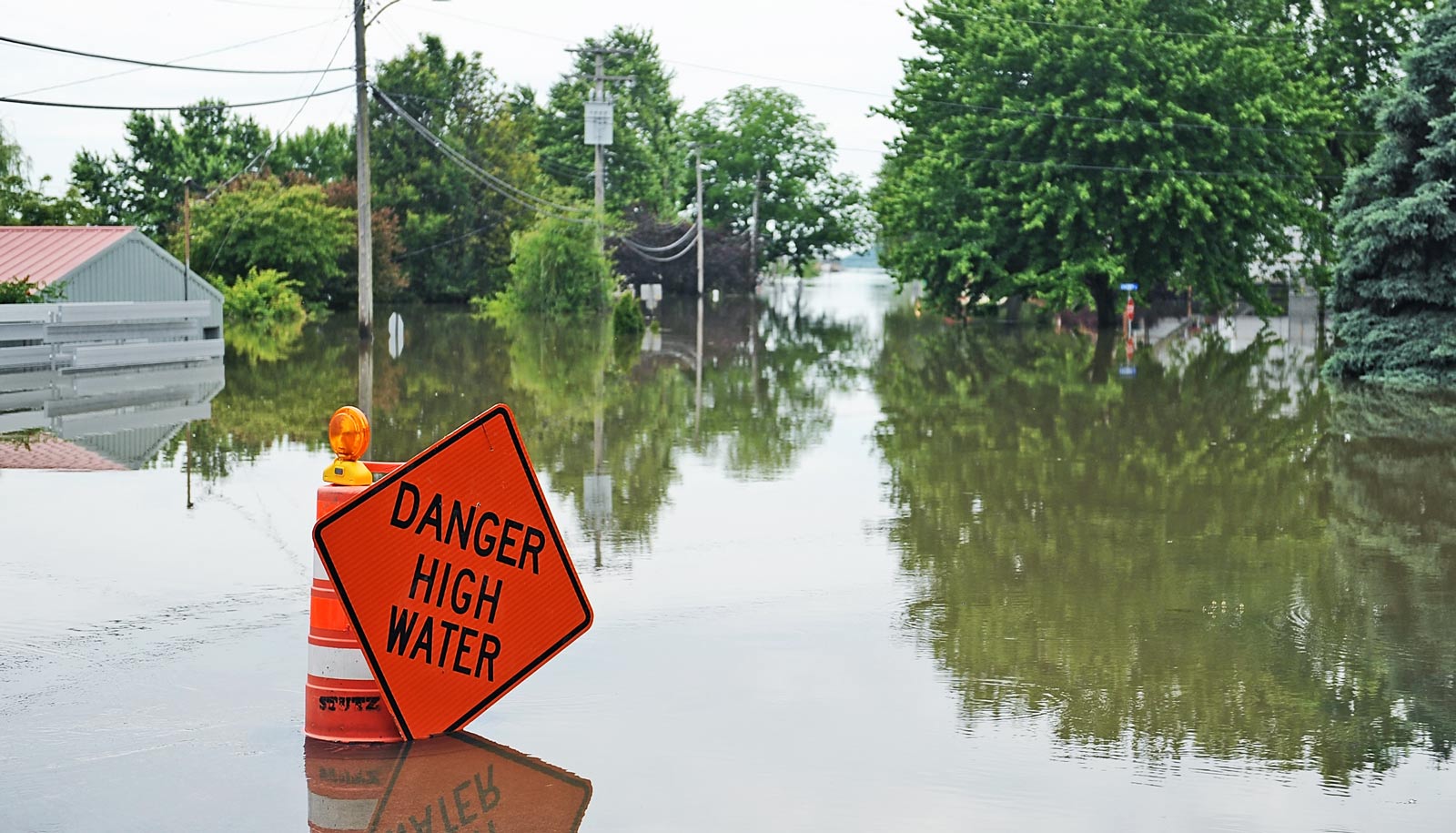Changing the incentives for water use and storage could mitigate the stress of droughts, according to new research.
Humans use water for a variety of different ends, but rivers also need water flowing through them to ensure the survival of fish and other wildlife. In fact, the Endangered Species Act (ESA) requires a minimum stream flow in certain rivers to protect threatened fish. In Oregon’s Willamette River this is also tied to the fishing industry. No water means no salmon, and no salmon means no fishing.
Andrew Plantinga, an environmental economist at the Bren School of Environmental Science & Management at the University of California, Santa Barbara, teamed up with colleagues at institutions in the Pacific Northwest to investigate water use dynamics in the Willamette River Basin. The goal was to figure out how to meet human demands on water while fulfilling the minimum flow requirements during severe droughts.
The team set up a spatial model to simulate human and natural factors. The model comprises 160,000 individual cells spanning the basin with rules that governed how the system changed over time. They selected a particular year in the simulation where the basin suffered a severe drought, and homed in on short-term interventions that might allow the region to meet both human demand and ESA requirements.

Fighting the affects of droughts with fees
The team targeted three major aspects of the basin’s water economy: urban use, agricultural use, and reservoir supply. By raising the price of water in cities, they could drive down urban use. Agriculture uses more water than cities do in this region, but this is not simply penny wise, pound foolish, according to Plantinga.
Changing urban pricing regimes is a legitimate strategy. It was part of the response California took to the drought after 2014, he says. In the Willamette Basin simulation, these interventions saved between 32 billion and 84 billion liters of water depending on the magnitude of the change.
Because the agricultural sector accounts for more water use than urban areas, it afforded a larger potential for conservation. Unlike in cities, agriculture in the Willamette River Basin falls under the prior appropriations doctrine, which establishes volumetric limits and a seniority system for farmers. So the team simulated how a per-acre irrigation fee would influence agricultural water use.
“Western Oregon is not like California’s Central Valley, where you can’t grow crops if you don’t irrigate,” Plantinga explains. “In the Willamette Basin you can grow crops without irrigation. So it was really the change in incentive as to whether you’d be an irrigator or not.”
Changing fees reduced the amount of water diverted for irrigation by 18 billion to 309 billion liters. The large spread stems from the scale of the intervention.

Risk vs. reward
Changing the rule governing reservoirs provided a way to affect the supply side of this issue. Reservoirs serve two functions in the Pacific Northwest. They store water for later use, but also prevent floods by absorbing flows from heavy late-season storms. Unfortunately, these roles are at odds with each other because a full reservoir can’t accept excess rain. Officials need to balance these two missions, meaning they don’t completely fill reservoirs during the wet winters.
“So now think about the problem,” Plantinga says. “You’ve got a warm winter, but you don’t know what March is going to be like. You can’t just capture all that water in your reservoir because you might suddenly get a huge storm that requires that you have capacity to mitigate against flooding.” However, if a spring storm never arrives, you missed out on water you could have saved.
Plantinga and his colleagues decided to test what would happen if they changed the rules reservoirs operate under. The team allowed them to begin filling earlier in drought years, and allowed them to continue discharging water into rivers even when water levels dropped into the buffer zone, when reservoirs typically save their remaining stores for human use. They found that these changes in protocol could increase stored water availability by between 34 billion and 87 billion liters in their simulation.
Ultimately, policies that took more risks had greater potential, Plantinga acknowledges. If you begin filling reservoirs early, you risk not having the capacity to absorb the flows from large spring storms, but you’re able to store much more water in a dry winter. If you continue letting out water when the reservoirs are low you run the risk of not having enough for human demand, but you’re better able to meet ESA flow requirements.
Still falling short
Unfortunately, even the most progressive interventions were only partially successful in meeting ESA regulations. The efforts were able to conserve enough water to close 81% of the gap between the minimum flow requirements and the status quo, however there were still periods when flows fell short.
So why did these efforts fail?
Stated simply, not all the conserved water could go toward meeting the ESA requirements. Meeting water demands during a drought is all about timing and location. “For instance, you can’t meet a minimum flow requirement at Salem by conserving water downstream in Portland,” Plantinga says. “Similarly, if you’re not meeting the flow requirement in May, it doesn’t really do you a lot of good to conserve a bunch of water in August.”
“Water conservation can be very effective, but it also has to get water to the right place at the right time,” he adds. So, while these initiatives can greatly impact water conservation, they also illustrate the challenge of meeting ecological requirements and human demand during severe drought years.
Climate change makes it worse
Although the Pacific Northwest is more temperate than California, it shares the same Mediterranean rainfall pattern: Most precipitation arrives in winter, and the region relies on a robust snowpack to store water and release it slowly throughout the spring and summer.
“However, in these kinds of Mediterranean systems, we have this misalignment between when you get the precipitation and when you need the water,” Plantinga explains. Although the rain arrives in winter, most demand comes in summer. For instance, farmers require large volumes of water to irrigate crops during the dry summer growing season.
Climate change exacerbates this challenge in two ways: Precipitation becomes more variable both in time and amount, and more arrives as rain rather than snow, according to Plantinga. Drought will likely become an increasing issue across the world, especially in the American West. In fact, the Willamette River Basin actually experienced a severe drought in 2015 not unlike the one the team simulated in this study.
In this vein, Plantinga plans to shift his focus toward groundwater management, especially in California. In 2014, the Golden State passed the Sustainable Groundwater Management Act, which sets sustainable yield goals for groundwater extraction. However, the law does not dictate how to reach these targets, so Plantinga plans to look at different approaches to meeting these goals.
The results appear in the journal Nature Sustainability.
Source: UC Santa Barbara



